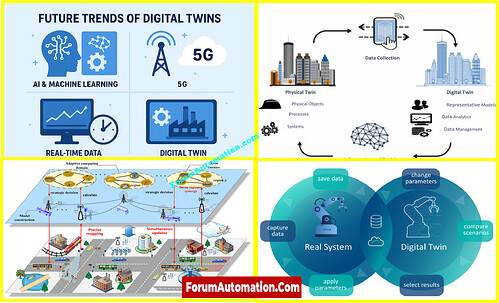What are the future trends of digital twins ?
What are the future trends of digital twins?
Digital twin technology is about to increase quickly as AI, IoT, cloud computing, and data analytics all get better at the same time. Digital twins are virtual copies of real things, systems, or processes. They are no longer just used for simple monitoring; they are now becoming dynamic platforms for making decisions that are predictive, prescriptive, and autonomous.
Digital twins will be a big part of predictive maintenance in the near future. They will help industries predict breakdowns, cut down on downtime, and make assets last longer. With the help of machine learning algorithms, they will become self-learning systems that can simulate “what-if” scenarios in real time, which will help with risk assessments and performance optimization.
The growth of industrial-scale integration is another important development. Digital twins will no longer just be about single devices; they will also be about factories, supply chains, and even smart cities. In the energy and utilities sectors, they will help make renewable energy systems work better. In healthcare, they will make individualized therapy possible by modeling therapies for each patient.
Sustainability will also help people use it. Digital twins will help with energy efficiency, lowering carbon footprints, and circular economy practices by simulating and optimizing how resources are used. Also, the fact that edge computing and 5G networks are becoming more common will make it easier to use and grow real-time, high-fidelity digital twins.
In ultimately, digital twins will only be useful if they become independent ecosystems that incorporate physical, digital, and business operations. In the age of Industry 4.0 and beyond, these will be necessary because they will speed up innovation cycles, make things more resilient, and give data-driven intelligence.
